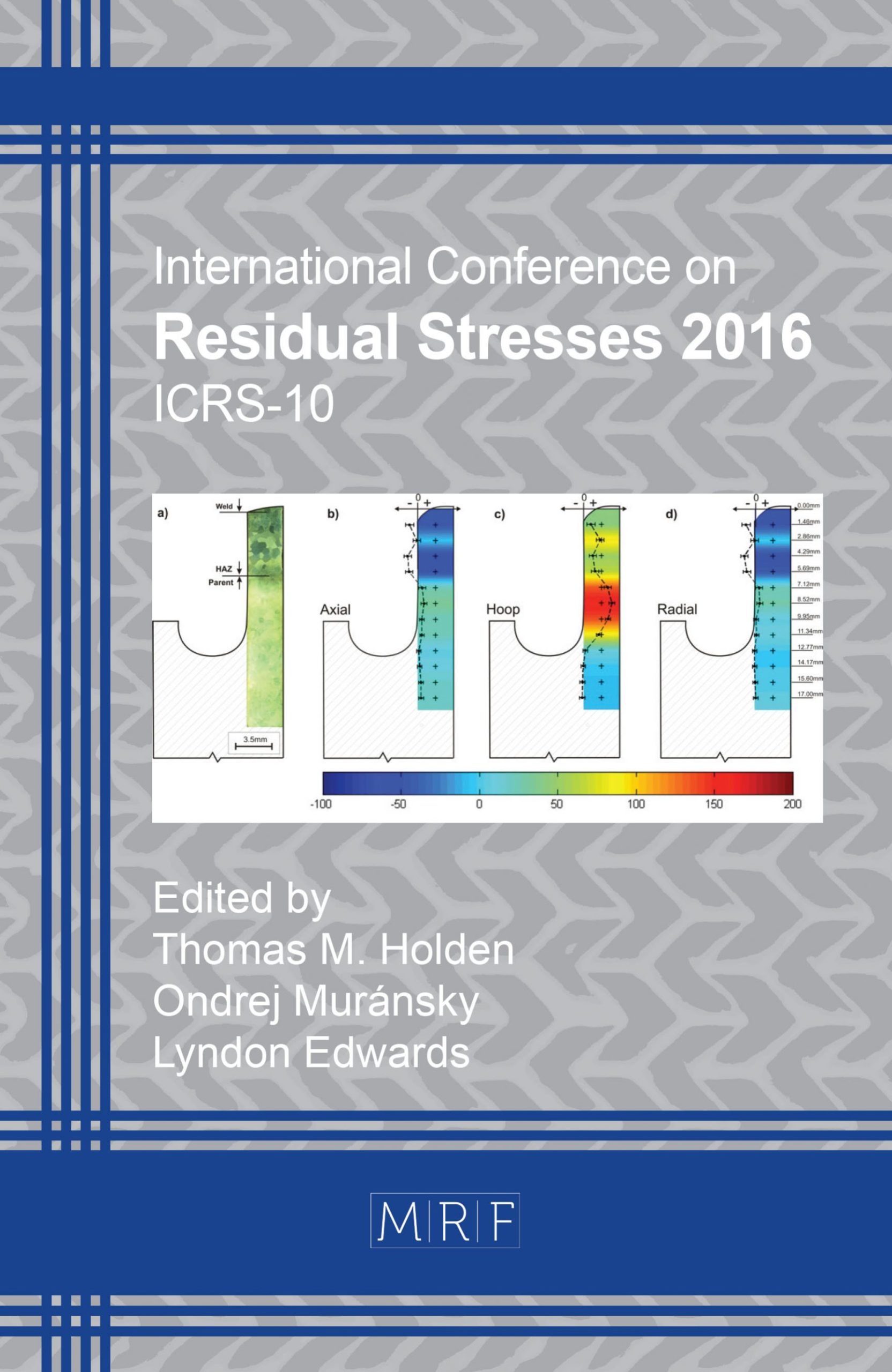Influence of the Pre-Stressing on the Residual Stresses Induced by Deep Rolling
N. Lyubenova, M. Jacquemin, D. Bähre
download PDFAbstract. Deep rolling is a mechanical surface treatment, which main aim is to increase the fatigue life of components by reducing their roughness, increasing the surface hardening and inducing compressive residual stresses. The increase of certain process input parameters such as the applied pressure or the number of overturns leads directly to the raising of the induced compressive residual stresses. Nevertheless, a saturation point is always achieved, where the further increase of the parameters’ levels does not change the induced residual stresses. For other mechanical surface treatments, like shot peening, several pre-stress techniques were employed in order to further increase the induced residual stresses without raising the shot intensity or the coverage percentage. Pre-stressed shot peening with the means of bending or torsion is an established processing. Up to now, a few investigations are available regarding the pre-stressing techniques applied to deep rolling. Therefore, this paper offers a newly designed finite element model, built to calculate the induced residual stresses by bending, consequent deep rolling and springback. A four point bending setup with different pre-stress levels was employed and the influence of pre-stress levels on the induced residual stresses was investigated. Additionally, the applied deep rolling pressure was also varied in order to optimize this hybrid processing. At the end, the anisotropy of the induced longitudinal and transverse residual stresses due to the bending and deep rolling was analyzed.
Keywords
Residual Stresses, Mechanical Surface Treatment, Deep Rolling, Pre-stressing, Finite Element Simulation
Published online 12/22/2016, 6 pages
Copyright © 2016 by the author(s)
Published under license by Materials Research Forum LLC., Millersville PA, USA
Citation: N. Lyubenova, M. Jacquemin, D. Bähre, ‘Influence of the Pre-Stressing on the Residual Stresses Induced by Deep Rolling’, Materials Research Proceedings, Vol. 2, pp 253-258, 2017
DOI: http://dx.doi.org/10.21741/9781945291173-43
The article was published as article 43 of the book Residual Stresses 2016
![]() Content from this work may be used under the terms of the Creative Commons Attribution 3.0 licence. Any further distribution of this work must maintain attribution to the author(s) and the title of the work, journal citation and DOI.
Content from this work may be used under the terms of the Creative Commons Attribution 3.0 licence. Any further distribution of this work must maintain attribution to the author(s) and the title of the work, journal citation and DOI.
References
[1] G. Bernstein, B. Fuchsbauer, Festwalzen und Schwingfestigkeit, Z.f. Werkstofftechnik 13 (1982), 103 – 109. http://dx.doi.org/10.1002/mawe.19820130309
[2] I. Nikitin, I. Altenberger, B. Scholtes, Effect of deep rolling at elevated and low temperatures on the isothermal fatigue behavior of AISI 304, Proceedings of 9th International Conference on Shot Peening, Paris (2005), 185-190.
[3] P. Juijerm, Fatigue behavior and residual stress stability of deep-rolled aluminium alloys AA5083 and AA6110 at elevated temperatures, dissertation, Universität Kassel, Institut für Werkstofftechnik Metalische Werkstoffe, (2006).
[4] D. Meyer, E. Brinksmeier, F. Hoffmann, Surface hardening by cryogenic deep rolling, Proceedings of 1st CIRP Conference on Surface Integrity (CSI), Procedia Engineering 19 (2011), 258 – 263. http://dx.doi.org/10.1016/j.proeng.2011.11.109
[5] C. Straub, D. May, Stress Peening, The Iron Age (1949), 66–70.
[6] C. F. Barrett, and R. Todd, Investigation of the effects of elastic pre-stressing technique on magnitude of compressive residual stress induced by shot peen forming of thick aluminum plates, Proceedings of the 2nd International Conference on Shot Peening (1984), 15-21.
[7] J. Xu, D. Zhang, B. Shen, The Fatigue Strength And Fracture Morphology Of Leaf Spring Steel After Prestressed Shot Peening, Proceedings of the 1st International Conference on Shot Peening (1981), 367-374.
[8] E. Müller, Evolution of the residual stresses by stress rolling, Proceedings of the 9th International Conference on Shot Peening (2005), 436-441.
[9] D. Trauth, F. Klocke, P. Mattfeld, A. Klink, Time-Efficient Prediction of the Surface Layer State after Deep Rolling using Similarity Mechanics Approach, Procedia CIRP 9 ( 2013 ), 29 – 34. http://dx.doi.org/10.1016/j.procir.2013.06.163
[10] N. Lyubenova, D. Baehre, Finite Element Modelling and Investigation of the Process Parameters in Deep Rolling of AISI 4140 Steel, Journal of Materials Science and Engineering B 5 (7-8) (2015), 277-287.
[11] N. Lyubenova, L. Thuillier, D. Baehre, Modeling of the Input Parameters and Investigation of the Surface Residual Stresses and Deformations in Deep Rolling, Proceedings of the 29th International Conference on Surface Modification Technologies (2015), 86-93.
[12] E. Müller, Comparison of the Residual Stresses Induced by Shot (Stress) Peening and Rolling in Spring Steel, in Shot Peening (ed L. Wagner), & Co. KGaA, Weinheim, FRG (2002).
[13] Schulze, Surface Layer States after Mechanical Surface Treatments, in Modern Mechanical Surface Treatment: States, Stability, Effects, Wiley-VCH Verlag GmbH (2005).































